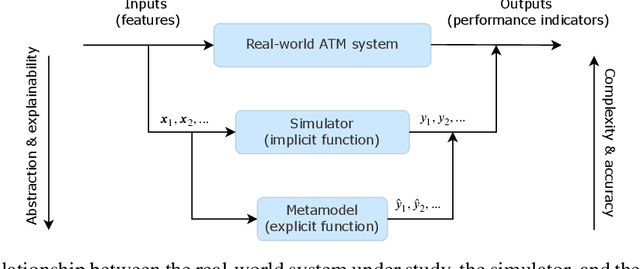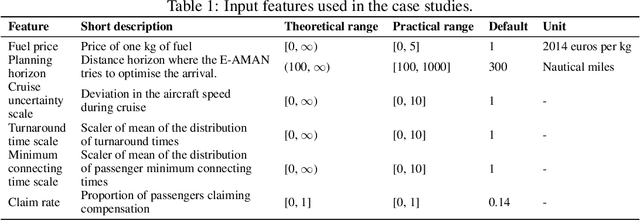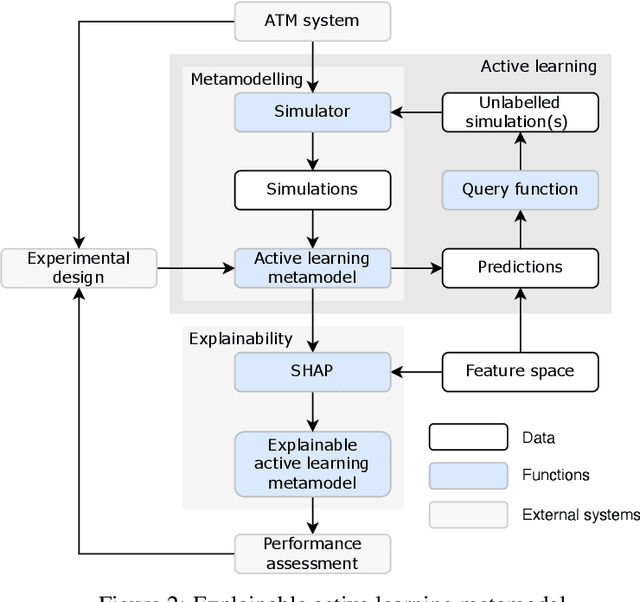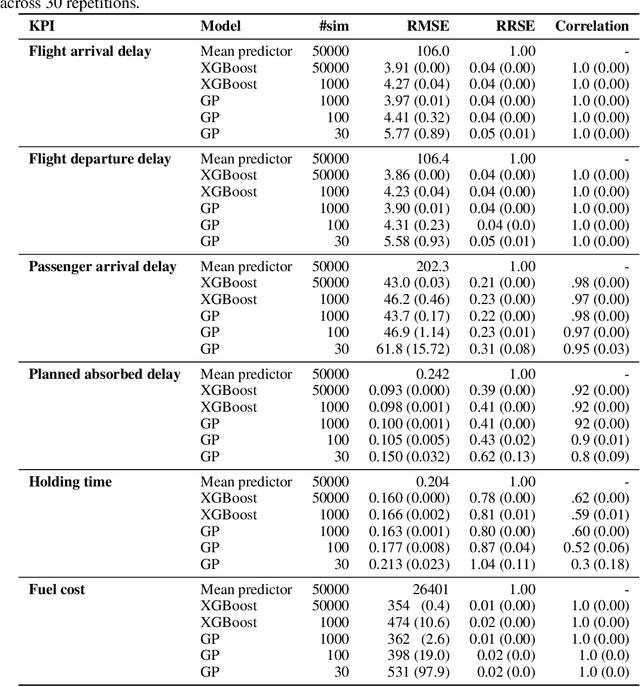Tatjana Bolić
Applied metamodelling for ATM performance simulations
Aug 07, 2023



Abstract:The use of Air traffic management (ATM) simulators for planing and operations can be challenging due to their modelling complexity. This paper presents XALM (eXplainable Active Learning Metamodel), a three-step framework integrating active learning and SHAP (SHapley Additive exPlanations) values into simulation metamodels for supporting ATM decision-making. XALM efficiently uncovers hidden relationships among input and output variables in ATM simulators, those usually of interest in policy analysis. Our experiments show XALM's predictive performance comparable to the XGBoost metamodel with fewer simulations. Additionally, XALM exhibits superior explanatory capabilities compared to non-active learning metamodels. Using the `Mercury' (flight and passenger) ATM simulator, XALM is applied to a real-world scenario in Paris Charles de Gaulle airport, extending an arrival manager's range and scope by analysing six variables. This case study illustrates XALM's effectiveness in enhancing simulation interpretability and understanding variable interactions. By addressing computational challenges and improving explainability, XALM complements traditional simulation-based analyses. Lastly, we discuss two practical approaches for reducing the computational burden of the metamodelling further: we introduce a stopping criterion for active learning based on the inherent uncertainty of the metamodel, and we show how the simulations used for the metamodel can be reused across key performance indicators, thus decreasing the overall number of simulations needed.
NOSTROMO: Lessons learned, conclusions and way forward
Mar 29, 2023Abstract:This White Paper sets out to explain the value that metamodelling can bring to air traffic management (ATM) research. It will define metamodelling and explore what it can, and cannot, do. The reader is assumed to have basic knowledge of SESAR: the Single European Sky ATM Research project. An important element of SESAR, as the technological pillar of the Single European Sky initiative, is to bring about improvements, as measured through specific key performance indicators (KPIs), and as implemented by a series of so-called SESAR 'Solutions'. These 'Solutions' are new or improved operational procedures or technologies, designed to meet operational and performance improvements described in the European ATM Master Plan.
 Add to Chrome
Add to Chrome Add to Firefox
Add to Firefox Add to Edge
Add to Edge